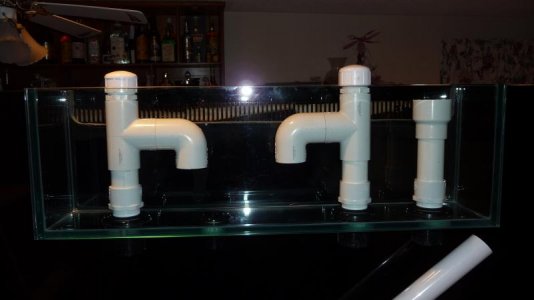The original designed used 1" bulkheads and 1.5" pipe. The 1" bulkheads were already there, as the intent was to use (3) dursos.... The failure of the dursos to perform quietly is what led me to design a better mousetrap. The system ran with 1" pipe, but the open channel was not as quiet or stable as I had wished, so I rebuilt the standpipes with 1.5" pipe.
If it were me, I would simply push all 1500 GPH through the refugium.... I had a "low flow" refugium for many years and really saw no benefit from the low flow. In fact the low flow turned it into a detritus trap.
Ahh, so my thinking was backwards then, so should I change the order so that I have 1" bulkheads instead of 1.5" or will that make a difference?


